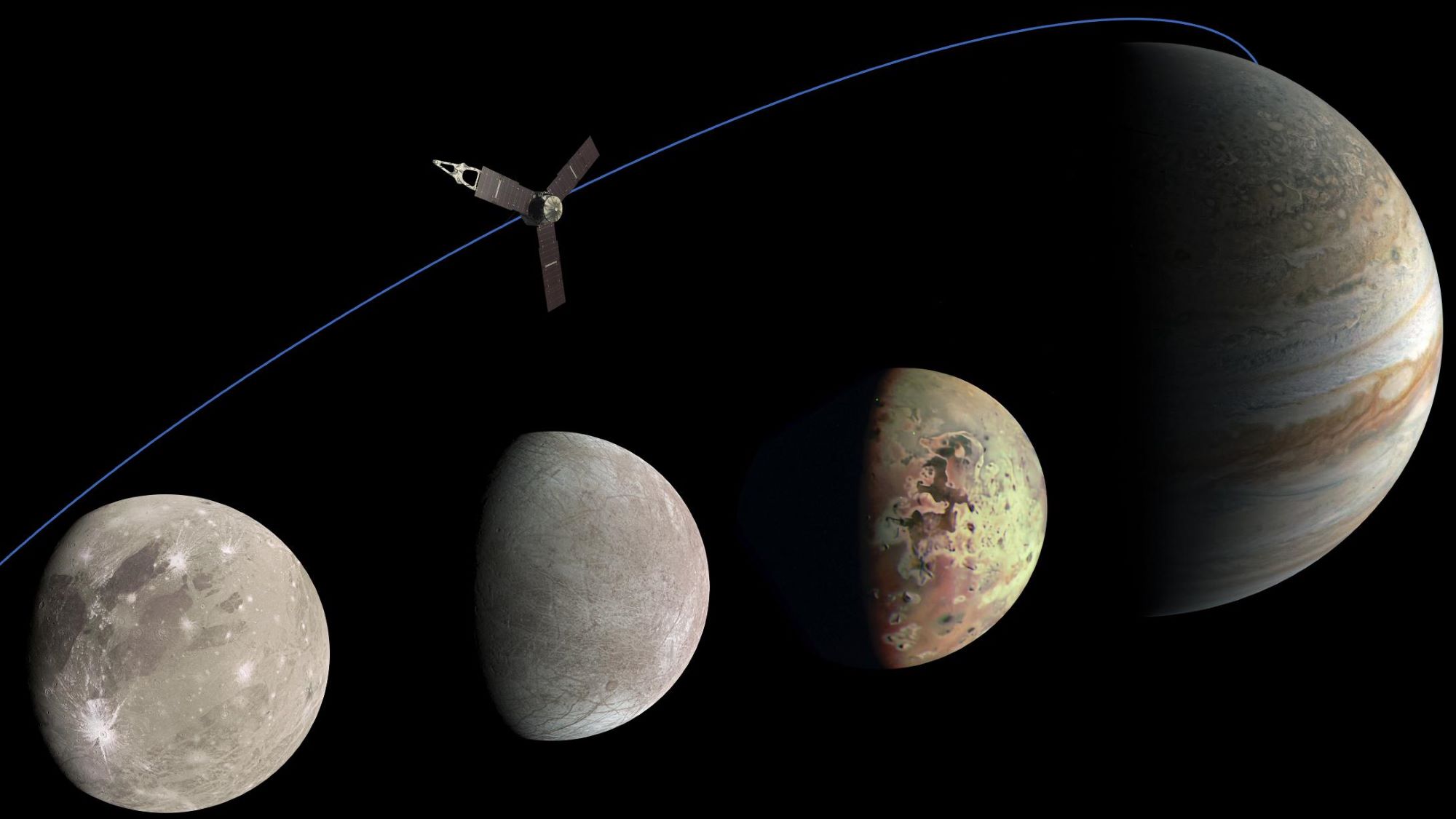

NASA’s Juno spacecraft has been exploring Jupiter since it arrived at the planet in 2016. In recent years, the mission has turned its attention to the gas giant’s many moons, including the hellish volcanic world Io and the ice ball Europa. Now, in research published in Nature Astronomy, the Juno team revealed new photos of Jupiter’s largest moon, Ganymede, which show evidence of salts and organic compounds. These materials are likely the residue of salty sea water from an underground ocean that bubbled up to the frozen surface of Ganymede. And, excitingly, a salty ocean indicates conditions there might be conducive to life.
Ganymede is a particularly weird place. Not only is it Jupiter’s most massive satellite, it’s the biggest moon in the whole solar system—it’s even larger than the planet Mercury. It also is the only moon to have its own magnetic field, generated from a molten metal core deep in its interior. Like other icy worlds of the outer solar system, such as Europa or possibly Pluto, Ganymede probably has an ocean lurking under its icy crust. Some studies suggest multiple seas, stacked together in a layer cake of ice sheets and oceans, hide underground.
“Because Ganymede is so big, its interior structure is more complicated” than that of smaller worlds, explains University of Arizona geologist Adeene Denton, who is not affiliated with the new work. She notes that the moon’s massive size means there’s a lot of space for interesting molecules to mix about. But that also means they’re tricky to spot, because material must cover a large distance to get to the surface where our spacecraft can see them.
Juno finally passed close enough to Ganymede—within 650 miles, less than the distance from New York City to Chicago—to take a close look at the chemicals on its surface using its Jovian InfraRed Auroral Mapper (JIRAM). This incredible instrument tracked the composition of Ganymede’s surface in great detail, noting features as small as 1 kilometer wide. If JIRAM were looking at New York City, it would be able to map Manhattan in ten-block chunks.
[Related: Astronomers find 12 more moons orbiting Jupiter]
Importantly, material on the surface of Ganymede might tell us about the water hiding below. If there are salts above, the subsurface ocean might have that same brine. Oceans, including the ones on Earth, acquire their salt from chemical interactions where liquid water touches a rocky mantle. This kind of exchange is “one of the conditions necessary for habitability,” says lead author Federico Tosi, research scientist at the National Institute for Astrophysics in Rome, Italy.
However, other current research suggests that Ganymede doesn’t have a liquid water layer directly touching its mantle. Instead, icy crusts separate the ocean from the rock. But because the team did see these salts in the JIRAM data, it suggests they were touching at one point in the past, if not now. “This testifies to an era when the ocean must have been in direct contact with the rocky mantle,” explains Tosi.
As for the organic chemicals that Juno detected, the team still isn’t completely sure what flavor of compound they are. They’re leaning towards aliphatic aldehydes, a type of molecule found elsewhere in the solar system that’s known as an intermediate step necessary to build more complex amino acids. These usually indicate liquid water and a rocky mantle are interacting. This definitely isn’t a detection of life, but it’s interesting for the possibility of life lurking in Ganymede’s hidden oceans. “The presence of organic compounds does not imply the presence of life forms,” says Tosi. “But the opposite is true: life requires the presence of some categories of organic compounds.”
[Related: Why a 3,000-mile-long jet stream on Jupiter surprised NASA scientists]
Unfortunately, Juno won’t have a chance to swing by Ganymede again to search for more salty shores—instead, it’s headed toward the explosive Io. The probe’s most recent survey of these minerals was a “a unique opportunity to take a close look at this satellite,” Tosi says. We won’t have to wait too much longer, though, for a second visit. In about ten years, he adds, we’ll get another chance to explore these salty waters with the ESA JUICE mission, “which is expected to achieve complete and unprecedented coverage of Ganymede.”